
Filip Konowal VC was a highly decorated Ukrainian Canadian soldier. He is the first Canadian Corps member not born in the British Empire to be awarded the Victoria Cross, the highest award for gallantry in the face of the enemy given to British and Commonwealth forces. He was also entitled to the Cross of St George, 4th Class.
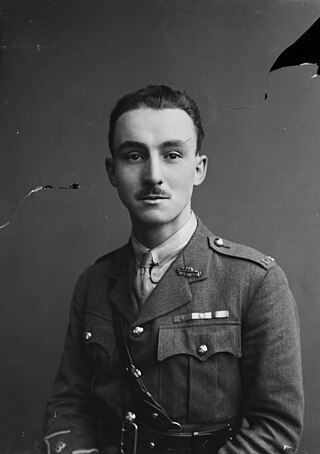
Brigadier Milton Fowler Gregg was a Canadian military officer and a First World War recipient of the Victoria Cross, the highest award for gallantry in the face of the enemy that can be awarded to British and Commonwealth forces. In later life, he was a Member of the Canadian Parliament, cabinet minister, academic, soldier and diplomat.
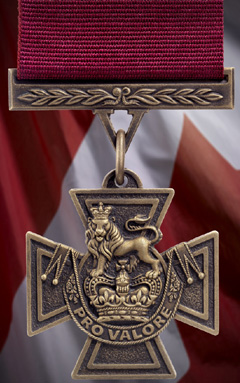
The Victoria Cross was created in 1993, perpetuating the lineage of the British Victoria Cross, while serving as the highest award within the Canadian honours system, taking precedence over all other orders, decorations, and medals. It is awarded by either the Canadian monarch or his viceregal representative, the governor general of Canada, to any member of the Canadian Armed Forces or allies serving under or with Canadian military command for extraordinary valour and devotion to duty while facing hostile forces. The British Victoria Cross was recommended prior to the creation of the Canadian medal. The previous Victoria Cross remains the highest award of the United Kingdom honours system and was also awarded in other Commonwealth countries; although most, including Canada, later established their own honours systems and no longer recommended British honours.
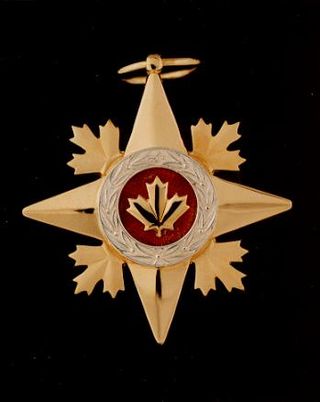
The Star of Military Valour is a military decoration that is, within the Canadian system of honours, the second highest award for military valour, and one of three honours for military valour awarded by the Canadian monarch, generally through his or her viceroy-in-Council. Created in 1993, the medal is presented to both living and deceased members of the Canadian Forces deemed to have demonstrated "distinguished and valiant service in the presence of the enemy," and grants recipients the ability to use the post-nominal letters SMV.
Canada's role in the Afghanistan War began in late 2001. Canada sent its first element of soldiers secretly in October 2001 from Joint Task Force 2, and the first contingents of regular Canadian Armed Forces (CAF) troops arrived in Afghanistan in January–February 2002. The operations were aimed at identifying and neutralizing Al-Qaeda members in that country and toppling the Taliban regime which was supporting international terrorism. Canada's role in the Afghan conflict grew in 2006 when Canadian troops relieved US forces in Kandahar province, taking command of the multinational brigade in the region during a major Taliban offensive.

Sangin is a town in Helmand province of Afghanistan, with a population of approximately 20,000 people. It is located on 32°4′24″N64°50′2″E in the valley of the Helmand River at 888 m (2,913 ft) altitude, 95 km (59 mi) to the north-east of Lashkargah. Sangin is notorious as one of the central locations of the opium trade in the south of the country, and is also a town that has traditionally supported the Taliban. It was described by British newspaper The Guardian as "the deadliest area in Afghanistan" in 2010. Sangin also houses the main bazaar for Sangin District. Route 611 passes through Sangin.

Operation Medusa was a Canadian-led offensive during the second Battle of Panjwaii of the War in Afghanistan. The operation was fought primarily by the 1st Battalion, The Royal Canadian Regiment Battle Group and other elements of the International Security Assistance Force, supported by the Afghan National Army and a team from the United States Army's 1st Battalion, 3rd Special Forces Group (Airborne) augmented by C Company, 2nd Battalion, 87th Infantry Regiment of the 10th Mountain Division. Its goal was to establish government control over an area of Kandahar Province centered in the district of Panjwayi some 30 kilometres (19 mi) west of Kandahar city. A tactical victory, it resulted in the deaths of 12 Canadian soldiers; five during the major combat operations, five in bombings, and two in a mortar/RPG attack during the reconstruction phase of the operation. Fourteen British military personnel were also killed when their plane crashed. Despite suffering a brutal battlefield defeat, the Taliban retained their presence in Kandahar province and did not lose their will to fight, leading to the subsequent Operation Falcon Summit. Nonetheless, Operation Medusa was at the time the most significant land battle ever undertaken by NATO.

Operation Mountain Fury was a NATO-led operation begun on September 16, 2006 as a follow-up operation to Operation Medusa, to clear Taliban insurgents from the eastern provinces of Afghanistan. Another focus of the operation was to enable reconstruction projects such as schools, health-care facilities, and courthouses to take place in the targeted provinces.

The United Kingdom was one of the first countries to take part in Operation Enduring Freedom against the Taliban regime in autumn 2001.

The Battle of Panjwaii was fought in mid-2006 with primarily Canadian and Afghan soldiers, supported by small elements of Dutch, American, and British forces against the Taliban. There were two separate times in which the forces were involved in heavy fighting in the region. The first phase was fought in July 2006, and the second encounter lasted from September to October 2006.
Warrant Officer Patrick Tower, SMV, CD is a Canadian soldier who was the first recipient of the Star of Military Valour, a Canadian military decoration, in recognition of actions under enemy fire taken in the Pashmul region of Afghanistan. He had prior military service including the Battle of Medak Pocket and three tours in the former Yugoslavia with Canadian peacekeeping forces.

Corporal Bryan James Budd, was a British Army soldier and a Northern Irish recipient of the Victoria Cross (VC), the highest award for gallantry in the face of the enemy that can be awarded to British and Commonwealth forces.

Operation Falcon Summit was a Canadian-led operation in the Battle of Panjwaii and, on a larger scale, in the War in Afghanistan.
The following lists events that happened during 2004 in Afghanistan.
The Victoria Cross for Australia is the highest award in the Australian honours system, superseding the British Victoria Cross for issue to Australians. The Victoria Cross for Australia is the "decoration for according recognition to persons who in the presence of the enemy, perform acts of the most conspicuous gallantry, or daring or pre-eminent acts of valour or self-sacrifice or display extreme devotion to duty."

The siege of Sangin was a military engagement which occurred between June 2006 and April 2007, between Taliban insurgents and the British Army during the war in Afghanistan. During the engagement, the district centre of Sangin District in Helmand Province was occupied by British forces and was completely surrounded by Taliban fighters. At one point fighting became intensive, causing General David J. Richards, the then-NATO commander in Afghanistan, to declare that Helmand province had seen the fiercest fighting involving British troops since the Korean War. The siege became emblematic of the difficulty of the mission being carried out by British soldiers in Afghanistan, who nicknamed it "Sangingrad".

Matthew Croucher, is a member of the Royal Marines Reserve and a recipient of the George Cross, the highest British and Commonwealth medal for gallantry not in the face of the enemy, for his extreme valour in risking his life to safeguard the lives of his comrades. The award was announced by the Ministry of Defence on 23 July 2008, and gazetted on 24 July 2008, with a lengthy citation.
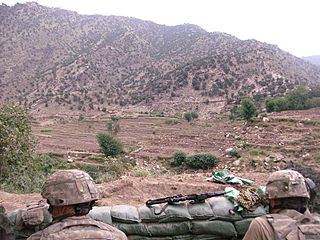
The Battle of Wanat took place on July 13, 2008, when around 200 Taliban insurgents attacked American troops stationed near Quam, in the Waygal district of Afghanistan's far eastern Nuristan province. The distant position was primarily defended by United States Army soldiers with 2nd Platoon, Chosen Company, 2nd Battalion, 503rd Infantry Regiment (Airborne), 173rd Airborne Brigade Combat Team.
The Battle of Derapet was fought near the village of Derapet in the Tangi Valley in Deh Rahwod, Orūzgān Province, southern Afghanistan, between a combined Australian Army and Afghan National Army patrol and Taliban forces on 24 August 2010. Australian forces had only recently taken over responsibility for Deh Rahwod as part of a major expansion of their area of operations which took place following the Dutch withdrawal from Afghanistan in August. The combined coalition patrol included 20 Australians and 20 Afghan National Army troops. The small Australian force from 1st Mentoring Task Force (MTF-1) based in Tarin Kowt included two sections of dismounted infantry and two ASLAV-25 guncars and was tasked with a fighting patrol to find and inflict damage on insurgent forces known to be in the area.
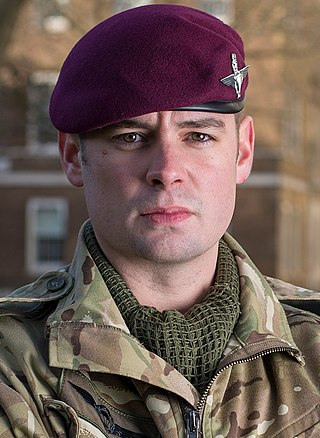
Colour Sergeant Joshua Mark Leakey is a British soldier currently serving in the Parachute Regiment. In 2015, Leakey was awarded the Victoria Cross, the highest military decoration for valour in the British and Commonwealth armed forces, for his involvement in a joint UK–US raid in Helmand Province, Afghanistan, on 22 August 2013. He was the only living British soldier to be awarded the Victoria Cross for the War in Afghanistan and the last person to receive it from Queen Elizabeth II.














